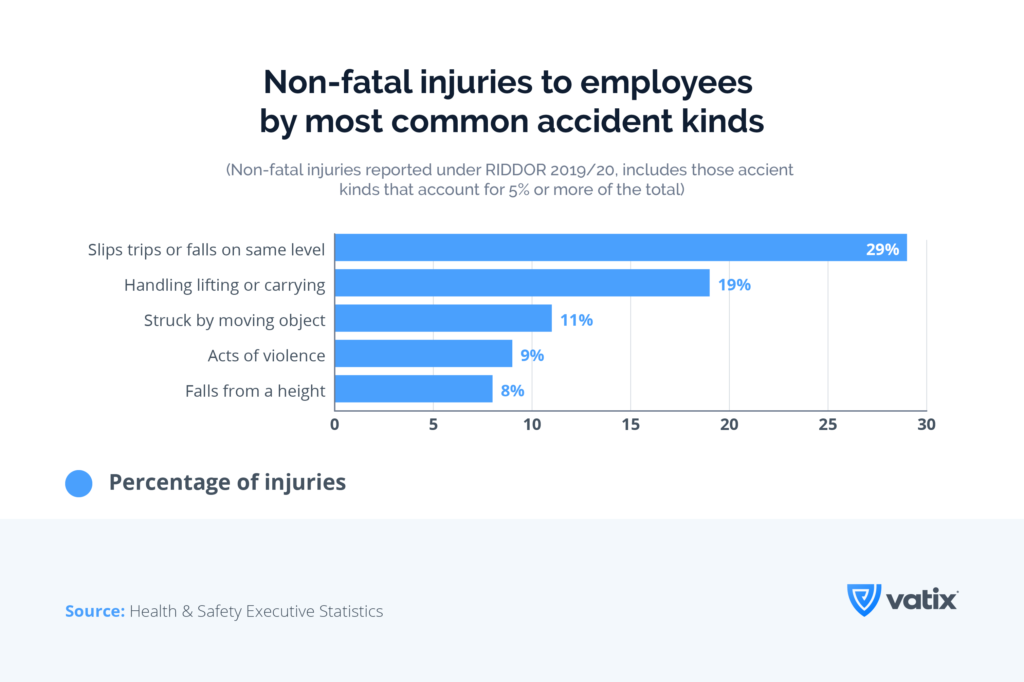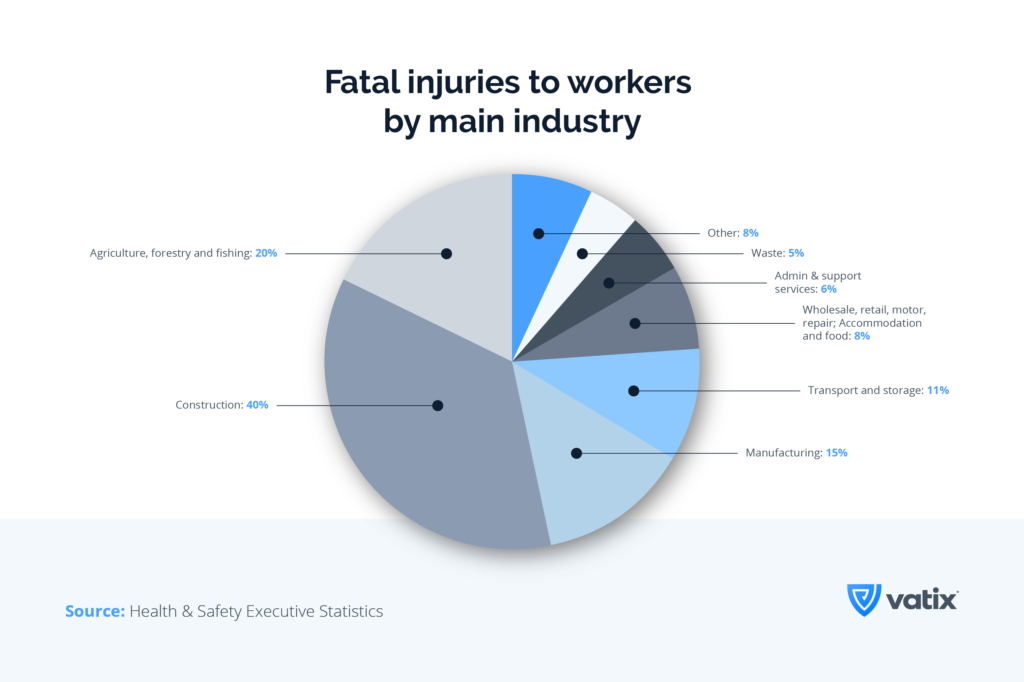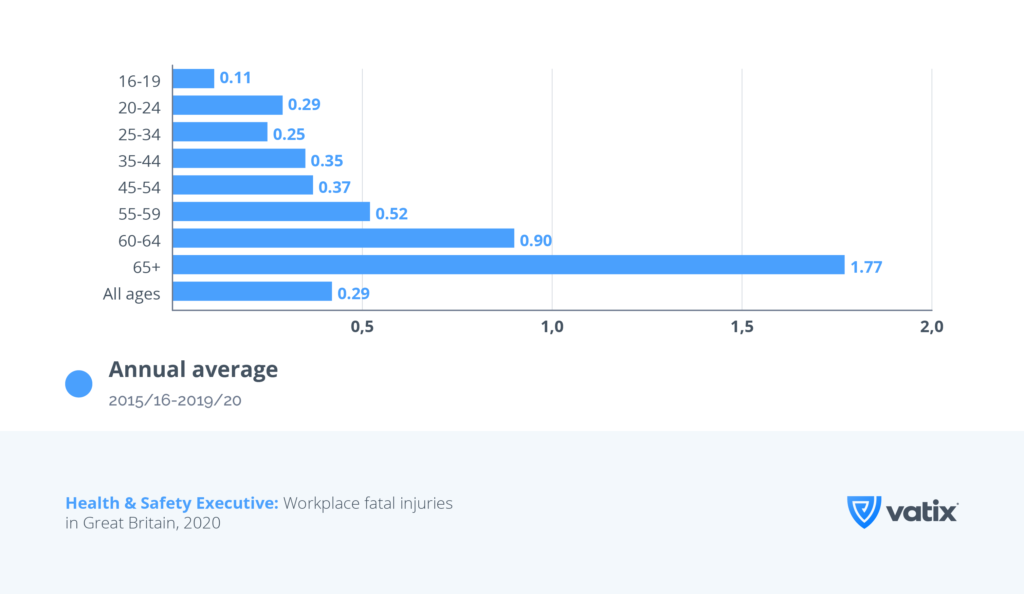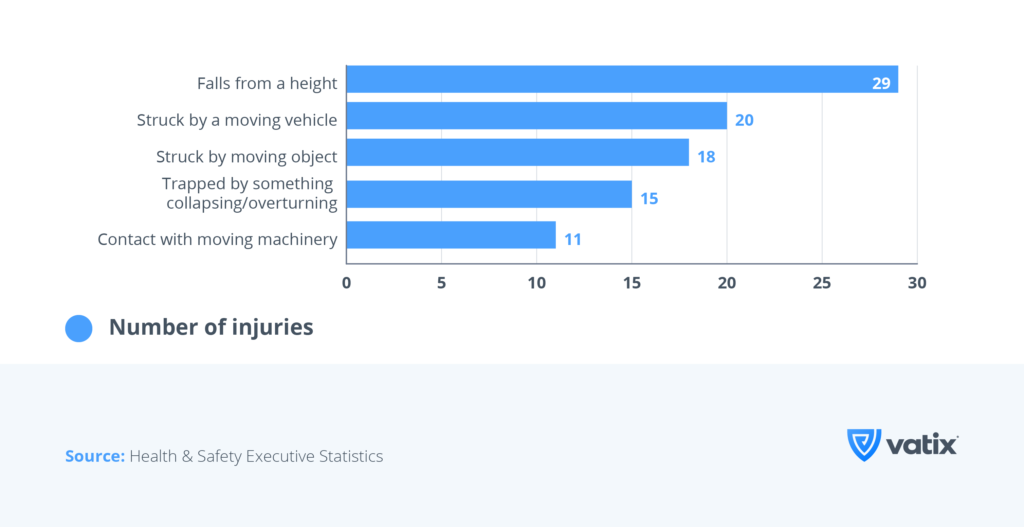Many UK organisations have employees required to perform duties or activities without supervision or team members present to assist or support them. This is known as lone working, and it can put employees in danger or increase their risk of injury during emergencies.
With an estimated 8 million lone workers in the UK workforce, it is important for employers and employees to employ lone working safety best practices.
The first step of lone working safety is being aware of the hazards that lone workers face. Awareness allows both employers and employees to make adequate preparation to uphold the highest safety standards that can protect a lone worker.

In this article, we will list the main hazards causing incidents in the workplace along with how commonly it occurs in the UK to help you become aware of the dangers your lone workers face.
The Hazards of Lone Working that can Lead to Non-Fatal Injuries at Work
According to HSE latest provisional 2019/2020 report:
- 693,000 workers in Great Britain sustained a non-fatal injury, according to self-reports from the Labour Force Survey in 2019/20 (LFS).
- 65,427 employees with non-fatal injuries were reported by UK employers in 2019/20 (RIDDOR).
The most common kinds of accidents reported under RIDDOR 2019/2020 are:

Lone workers face these same hazards. However, the risks of injury are higher for them because there isn’t a supervisor or team member around to assist or even know they are in danger. This makes it even more important to understand the hazards in more detail so you can take measures to mitigate the risks and keep your lone workers as safe as possible.
Slips, trips, or falls on the same level
Slip, trip, or falls are the most common types of accidents yet are often simple and cost-effective to prevent if you identify and mitigate the hazards properly. Since so many factors can cause a slip, trip, or fall, it can be tricky to identify all possible hazards. The following guideline can help you.
- Identify the hazards according to the six factors of the Slip Potential Model:
- Contamination
- Cleaning
- People
- Flooring
- Environment
- Footwear
- Identify any obstructions based on three factors of the Trip Potential Model:
- Walkways
- Housekeeping
- Design and maintenance
- Identify if any of these environmental hazards, such as low visibility or bad weather, can increase the risk of slips, trips, and falls, particularly for lone workers.
Handling lifting or carrying
Handling, lifting, or carrying can lead to both immediate injury or long-term musculoskeletal disorders. Manual handling risks can happen in various workplace environments, such as working on farms, building sites, offices, and making deliveries.
Struck by a moving object
Being struck by moving objects include things such as knives or any object falling from height. According to HSE reports, around 700 cases of being struck by moving objects are reported every year in the UK, of which around 100 cases cause major injuries.
Best practices to reduce the risks:
- Ensure your storage shelving is stable and secured for events such as earthquakes.
- Provide proper storage and policies for storing hand tools or sharp objects. For example, always sheathing knives for storage.
- Provide designated routes for equipment to move items, such as racks, trolleys, and pallet trucks.
- Ensure these designated routes have good visibility for all working hours.
Acts of violence
The HSE defines acts of violence as ‘any incident in which a person is abused, threatened or assaulted in circumstances relating to their work. Lone workers who are most at risk for acts of violence are those who are engaged in:
- giving a service
- caring
- education
- cash transactions
- delivery/collection
- controlling
- representing authority
Fall from a height
According to a 2003 HSE research report, the most common causes of falls from height according to various industries are:
| Industry | Typical causes of falls from height |
|---|---|
| Agriculture | - Roofs – through holes, fragile materials or roof lights - Trees |
| Construction | - Excavations - Ladders - Roofs – during erection - Roofs – through holes, fragile materials or roof lights - Scaffolding – collapse of - Scaffolding – falls from |
| Extraction and utility supply | - Excavations - Lattice towers / pylons |
| Manufacturing | - Forklift – from forks or working platform - Ladders - Lorries - Machinery / plant - Warehouse racking |
| Services | - Window cleaning - Lorries during loading or unloading |
The Hazards of Lone Working that can Lead to Fatal Injuries at Work
According to HSE latest provisional 2019/2020 report:
- 111 workers in Great Britain were killed in 2019/20 (RIDDOR).
- 92 members of the public were killed due to work-related activities in 2019/20.
The top three industries most vulnerable to fatal injuries at work are construction, agriculture, forestry and fishing, and manufacturing. The following chart gives a full breakdown of the fatal injuries at work according to industry.

According to HSE’s full report, ‘Workplace Fatal Injuries in Great Britain, 2020’, the construction industry has the highest number of fatal injuries. However, agriculture, forestry and fishing and waste and recycling have the worst rates of fatal injuries per 100,000 workers, with a rate that is 18 times higher than the average across all industries.
Another industry vulnerable to fatal injuries is the transportation and storage sector, whose fatal injury rate per 100,000 workers is almost double the average rate across all industries.
Industries with a relatively low risk of fatal injuries, accounting for around one-third of the total average rate, are wholesale, retail, motor repair, accommodation and food services. However, different sector activities can still pose higher risks and employers in every industry must still take preventive action to avoid accidents as best as possible.
The rate of fatal injuries also increases with higher age groups, showing that older workers across all industries are more vulnerable.
Here is a breakdown of fatal injuries in the workplace according to age that were reported between 2015/16-2019/2020.

The causes behind the fatal accidents at work reported in 2019/2020 are:

These accidents were not limited to lone workers. However, lone workers face the same hazards with higher risks because they are working alone.
Since ‘falls from a height’ and ‘being struck by a moving object’ has been covered in the previous section, we will cover the other causes reported in and before 2019/2020.
- Struck by a moving vehicle
The types of vehicles involved in fatal accidents have included a tractor, trailer, telescopic handler, forestry harvester, and skid steer loader. This list is not exhaustive.
- Trapped by something collapsing/overturning
A majority of trapped worker cases are caused by collapsing or overturning vehicles, machinery, and equipment. Other environmental factors that trap a worker occur less frequently.
- Contact with moving machinery
Moving machinery can cause injury in many ways. Compared to hazards such as slips, trips, and falls, these injuries tend to have a much higher risk of fatality due to high dangers of machinery crushing or causing major injuries to limbs. - Contact with electricity
Those who work with electrical equipment, wiring, or overhead power lines have the highest risk of being injured by contact with electricity.
- Exposure to fire, an explosion, or a harmful substance
Employers are responsible to regularly review a fire risk assessment of their premises or workplace. The additional risks of explosion or exposure to harmful substances are higher for special workplaces such as confined spaces, mining, and offshore locations.
- Drowning or asphyxiation
The risks of drowning or asphyxiation are higher for employees working in confined spaces such as grain stores or effluent tanks or a restricted space where the atmosphere is hazardous. It’s important to take note that it’s not just water that can cause asphyxiation. Contaminants such as dust, grain or other hazardous gasses can also lead to asphyxiation.
- Attacked by an animal
Lone workers with higher risks of being attacked by animals include those who work in the agriculture industry and zoos.
The Hazards of Lone Working that can Lead to Work-Related Illnesses
Employees, including lone workers, are also at risk of other long-term related illnesses which are not immediate injuries caused by a workplace accident. In their provisional 2019/2020 report, HSE reported the following work-related illnesses:
- 1.6 million work-related ill health cases (new or long-standing).
- 0.8 million work-related stress, depression or anxiety cases (new or longstanding).
- 0.5 million work-related musculoskeletal disorder cases (new or longstanding).
These estimates are based on self-reports from the Labour Force Survey from people who worked in the last 12 months.
Additionally, HSE reports fatalities from disease linked to working environments:
- 12,000 lung disease deaths each year estimated to be linked to past exposures at work.
- 2,446 mesothelioma deaths in 2018 with a similar number of lung cancer deaths linked to past exposures to asbestos.
- 638,000 workers suffering from a new case of work-related ill health in 2019/20
- 13,000 deaths each year estimated to be connected to past exposure at work, primarily to chemicals or dust.
Employees who work in public administration and defence, human health and social work and education have statistically significantly higher risks of long-term ill health rates than other industries.
The Cost of Workplace Injury and Work-Related Illnesses
Workplace injuries and work-related illnesses take a toll on all parties; the employer, the employee, and the government. Here’s a glimpse at what accidents, injuries, and illnesses have cost the UK, according to HSE’s summary statistics for Great Britain 2020 report.
- 25% of non-fatal injuries resulted in more than seven days of absence at work.
- 10.6 billion in annual costs of new work-related ill health cases, excluding long latency illness such as cancer.
- 16.2 billion in annual costs of work-related injury and new cases of ill health, excluding long-latency illness such as cancer
- 5.6 billion in annual costs of workplace injury.
- 38.8 million working days lost due to work-related ill health and non-fatal workplace injuries.
- 17.9 million working days lost due to work-related stress, depression, or anxiety.
- 8.9 million working days lost due to work-related musculoskeletal disorders.
- 6.3 million estimated working days lost due to non-fatal workplace injuries.
From this, it’s clear that lowering the risks of hazards in the workplace will not just protect your employees and lone workers. It can also protect businesses from lost working days and medical costs.
Mitigating the Risks of Lone Working Hazards
In summary, lone workers are exposed to the same hazards as other workers, except they face a higher risk of injury because they are alone. They require specialised attention instead of blanket health and safety policies designed for the general worker.
As HSE reports show, each working environment has its own unique set of hazards that lone workers can be exposed to. While some industries are more prone to certain dangers than others and thus require special attention, relying on the industry average is by no means a way to evaluate all the hazards your lone workers could face.
The best way to determine the exact hazards your lone workers are exposed to is by conducting a thorough lone working risk assessment and then creating a custom risk mitigation plan.
Here are some general best practices that you can include in your risk mitigation plan to minimise the most common hazards of lone working:
- Provide proper safety equipment.
- Ensure the equipment to work from height is safe and secure.
- Mitigate or remove the hazards that can cause slips, trips, and falls.
- Provide lone workers with sufficient training on how to conduct their duties
- Where possible, avoid assigning lone workers for manual labour tasks involving extremely heavy items, hazardous material, or working from height.
- Equip lone workers with lone working safety devices such as man-down alarms to notify team members when they have had an accident or are in danger.
By taking these proactive steps, you can help prevent serious and life-threatening injuries in the workplace. To get a better idea of effective solutions to protect your lone workers, download our free guide, “The Ultimate Guide to Lone Working Safety”.


